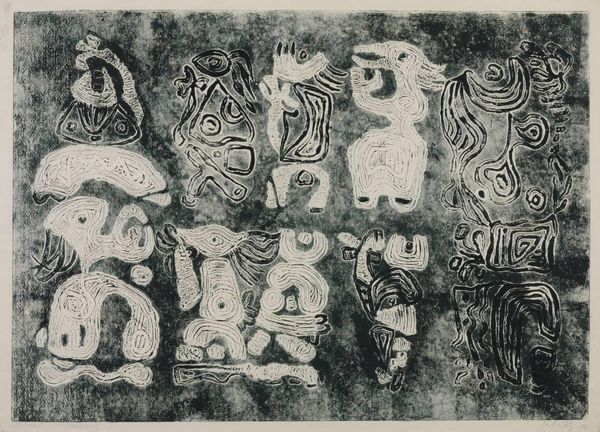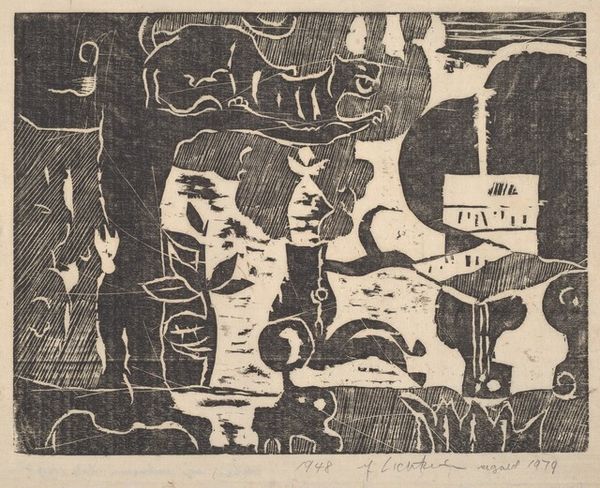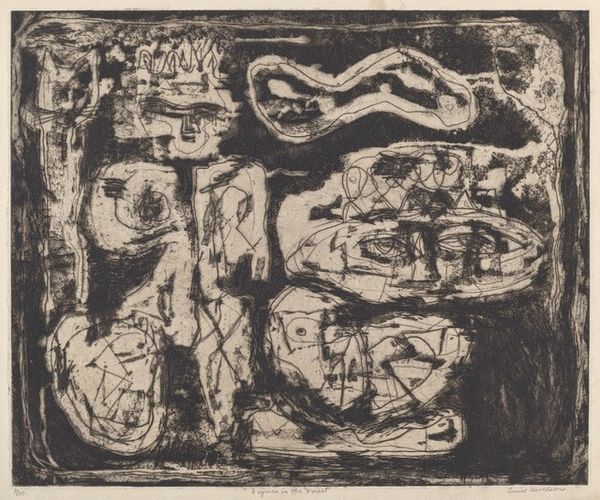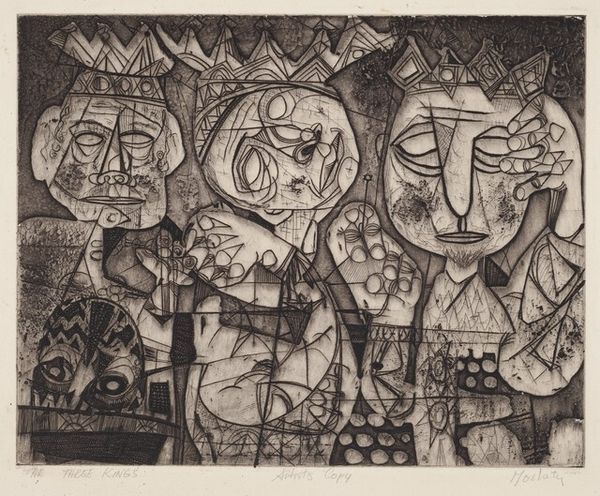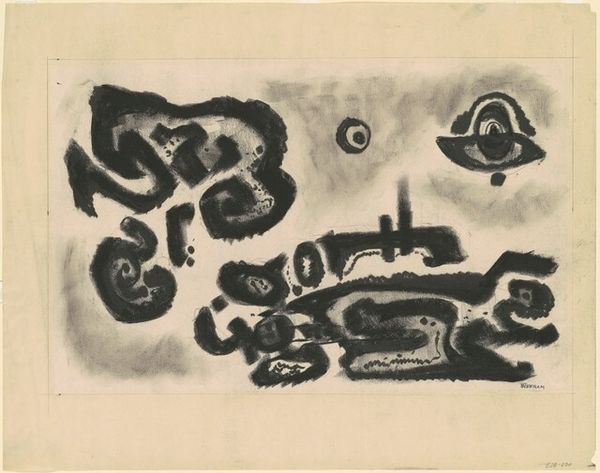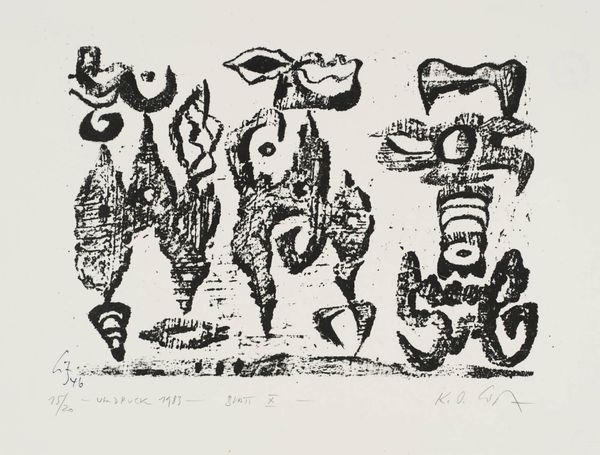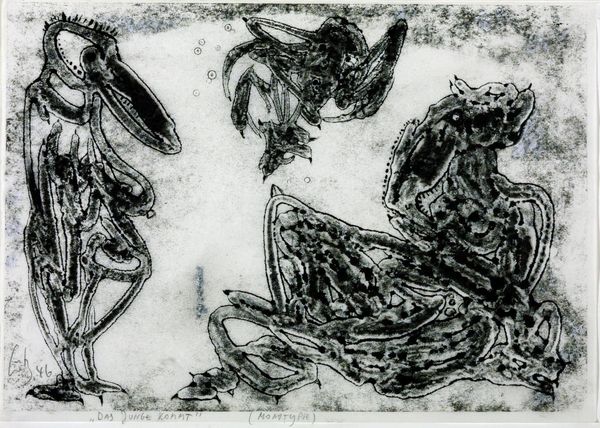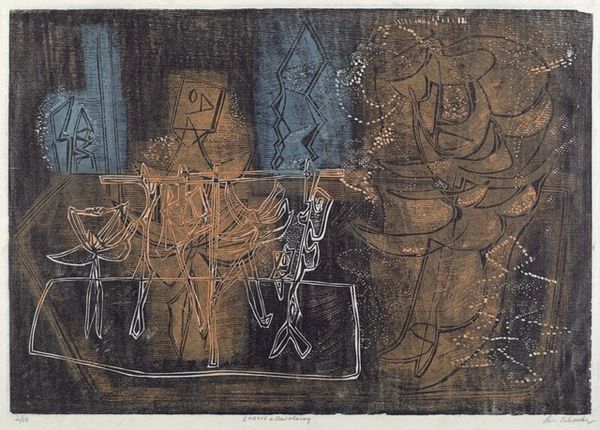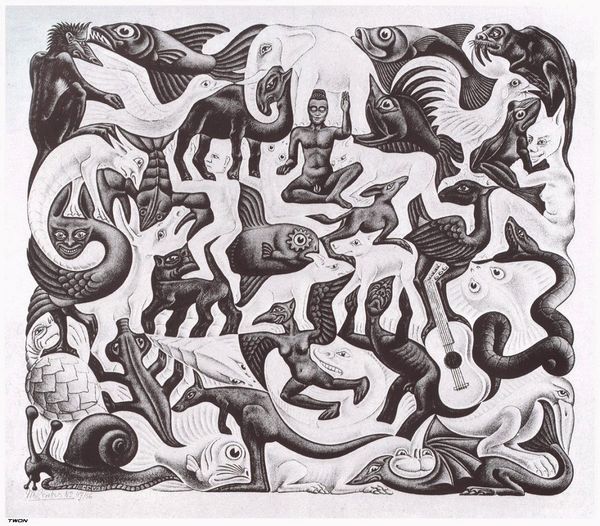
Copyright: Karl Otto Gotz,Fair Use
Karl Otto Götz made this artwork, "Gilgamesh," employing an abstract, monochrome style, echoing the post-World War II artistic explorations of existential themes. Götz, having lived through both World Wars, was deeply influenced by the anxieties and uncertainties of his time. His interest in the epic of Gilgamesh, one of the oldest known works of literature, reflects a search for universal narratives that grapple with human mortality and the quest for meaning. The figures seem caught between representation and abstraction. Götz’s art offers no straightforward answers, rather inviting us to contemplate our own place within the human story. How do these figures evoke the weight of history, the search for identity, and the shared human experience of facing the unknown?
Comments
No comments
Be the first to comment and join the conversation on the ultimate creative platform.
